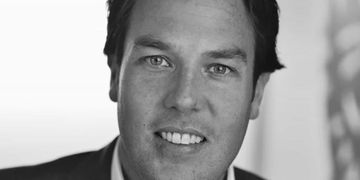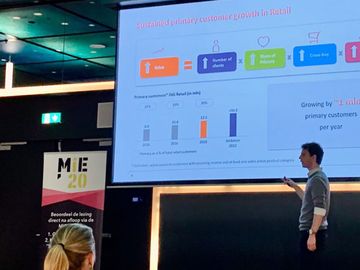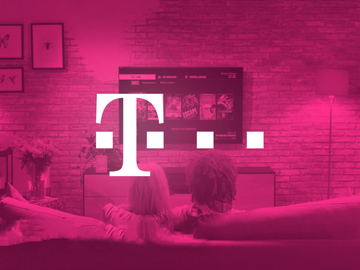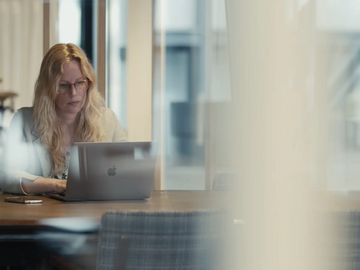
Jan Willem Mannen (ING): “We need to make customers happy in an omni-channel way!”
ING was last month’s winner of the orientation study of personal current accounts in The Netherlands, and last week ING won the study of business bank accounts as well (articles in Dutch). Here we talk with Jan Willem Mannen, customer journey expert at ING Business. About winning, squads, agile, Coolblue.nl, neuromarketing, and Robert Cialdini’s persuasion principles.
Congratulations, Jan Willem Mannen. You are the winner of this study of opening a freelance bank account. How important is it for you to be the best with ING?
Jan Willem Mannen: “It’s great we won. This WUA study reflects the views of our direct target audience, so it really is a great prize to win. We’re increasing our focus on online as a channel, so being the best is becoming increasingly important. Being the best online isn’t actually the most important thing for us, for us it’s key is that the customer is pleased with ING throughout the entire process, in an omni-channel way. So at the ING branch as well, precisely because there are identification requirements when you open a freelance bank account. For us, the branch is a very large part of the customer experience. Here, like online, customers need to be assisted without any problems and in a way that is satisfactory to them. Customers should have as much time as possible left for what they live for: entrepreneurship. An initial conversation with an advisor at our office can add a personal touch to an online world that might sometimes be perceived as a little detached.”
You don’t just score high on findability, but also the other topics of the WPS model. What is going so well for you when it comes to the digital customer experience?
“We’re easy to find for freelancers because we’re a large bank with lots of private customers. We actually have a really well-structured website now. Our website is responsive, so it’s also very easy to read on mobile devices. We have a new search engine, and we have a better grasp of what customers are looking for, and based on that we optimize our pages. We have a new look and feel, where “less is more” really is forms the basis. For example, we’ve started to use more white. We also aim to remove pages that aren’t frequently visited. I think you really need to delete those: you have to guide people through a journey, which is something you should do using the right information, rather than just a lot of it!”
At ING you made some drastic changes to the organisation a year and a half ago, and now that’s all finished. Instead of marketer, you are now a customer journey expert, and you work in squads and tribes with lots of end-to-end responsibilities…
“Indeed. As customer journey experts, we are now responsible, end-to-end, for a customer journey of a product group. As a marketer, the role was sometimes more like that of a client, and then we asked, straight from marketing, for digital adjustments to the content sections. In addition to the other features on an individual level, there is a division of tribes: Experience Tribes and Service Tribes. The Experience Tribes are engaged in the acquisition of online and offline “store visits”, and the Service Tribes are engaged in the experience within the store.
“We’re doing a lot by ourselves now: we’ve had CMS training. At the beginning, that took quite a lot of time, but now implementing changes works a lot better and faster. I’m a big fan of Robert Cialdini, and I find it wonderful to use his six principles of persuasion myself, and to A/B test my own “store” based on those principles. By really working on it yourself, you take your own responsibility. Also compared to before the reorganization, we have gained a lot of confidence from customers. Earlier on, 10 people were able to change things on the website, and now it’s 600!”
What is the role of customer research and customer focus in your daily work?
“Squads now have to decide for themselves to what extent they allow customers to make decisions and think along with us. If my team and I develop new propositions, we do this based on customer insights and customer validations, according to the Business Model Canvas by Alexander Osterwalder. We create hypotheses, and we check these with the customer. This can be in a pub or at the Chamber of Commerce, or simply by phone. It’s not really important to have a large number of respondents. We often have short conversations in which we check: this is something we can work with? Sometimes we receive enthusiastic responses, sometimes ideas are immediately shot down. This way, you can build fast, agile propositions. You go to the market with a minimal viable product to see if it works, and we A/B test it, or we roll out a broader test.
“Yes, of course you often get it wrong, and this takes up a lot of time. Also, not every freelancer is eager to answer questions, because it also takes up their time. We do understand this. But we believe that customer validation really is the future: unfortunately, there are still many marketers who make decisions based on their gut feeling, without listening to their customers. That’s old-fashioned.”
What is your biggest digital challenge?
“Inspiring our target audience of starting entrepreneurs, and persuading them to do business with us. It’s also a challenge for me to get the right customer insights and have a map of the actual experiences of freelancers who are orientating themselves digitally on banking. And then… In my opinion, neuromarketing is an untapped area, and I’d like to delve into it further. With Cialdini’s six principles, you can come a long way, you really can control digital behaviour without it coming across as negative. I think it’s a beautiful field of research, a big challenge that could be highly profitable. What I would like, is to know ahead of time which persuasion principle would work best on a particular customer.
“Let’s take Bol.com as an example: should you aim this set of pans you’re trying to sell to customer X at 2-for-1, or do you aim at reviews because this particular customer cares more about social proof than scarcity? Based on past customer behaviour, you can segment them nicely into groups, but also into individuals. We’re not there yet. For us, the challenge lies in linking the right sources, and finding and implementing the right tools. I think we will achieve this in the short term, at least I do have the ambition…”
How do you view service in relation to sales? Could service eventually become the new sales in your sector?
“An example. When you’re dealing with Amsterdam’s hospitality industry, you are almost surprised when you get normal, friendly service. I think that’s terrible. Good service is a basic requirement, and yes, I also believe that this will stimulate sales. We used to focus more on the product, but the organizational change ING is going through right now makes us focus more on the customer. I previously managed the ING-wide NPS program, through all business and consumer segments. NPS was launched six years ago as a strategic KPI, to secure customer experience in the organisation, and it can be a huge driver for sales. If the NPS is bad, you will see sales decline. And if you do something unique, like Coolblue do with April Fools jokes and the Dutch Sinterklaas party in December, whilst still offering a basic service which is at such a high level that people will talk about it… Then I ‘m convinced that you will see positive effects in sales in the slightly longer term.”
Are there any cool things in the making at ING, what digital innovations are you working on?
“We’re making sure that freelancers can soon become a customer with us fully digitally, from their private MijnING environment. Currently, you need to go to the branch for that. Physical identification checks are required for large banks like ourselves. At Knab.nl they work with secondary identification, but we’re not allowed to do that. Furthermore, multiple squads are working on an entrepreneur lab, where we work closely together with customers. This can be at our office, or anywhere else. One of our squads developed the ING lease calculator together with customers in the entrepreneur lab.
“Another practical example: we enabled direct payment with QR codes. You make a payment request in the mobile banking app, which you can put on an invoice. A customer can scan this invoice and pay directly via the ING app. It’s all about convenience and speed. And you don’t need to carry any cash, so it’s safer, too.”


